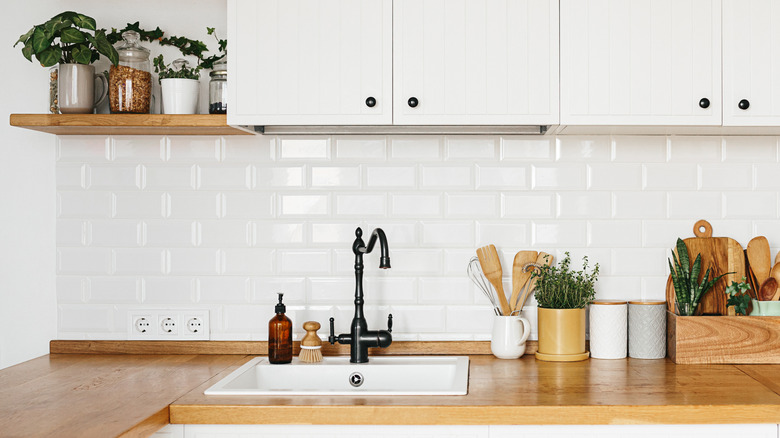Your Kitchen Sink Has More Germs Than You Think
Your kitchen sink must be clean from washing all of those dishes, right? Not so much. Think about all the things you use your kitchen sink for — rinsing off a cutting board after chopping raw meat, piling up dirty dishes, dumping out drinks, washing produce, and so much more. All of these things add to the many kinds of germs living in your kitchen sink. So make time to clean and sanitize.
Good Housekeeping recommends sanitizing your kitchen sink by plugging the drain and filling it with a gallon of warm water. Add a tablespoon of bleach, and let it sit for five minutes. Put on some cleaning gloves, dunk a sponge into the solution, and wring out the excess. Use the sponge to sanitize the faucet, handles, and other parts of your sink. Let the solution drain, give it a rinse, and then leave it to air dry.
So, are you wondering how many germs you just killed? It's a lot.
Your sink may be full of pathogens
A 2017 study published in the Journal of Food Protection tested microbiological samples from 100 kitchens to gauge consumer knowledge of proper food handling and storage methods. Researchers found that 15% of homes had E.coli living in kitchen sinks. But that wasn't all. They also found high rates of fecal bacteria in sinks, on dish towels, and sponges. Foodborne pathogens were found in 45% of the kitchens. Researchers discovered that sponges and dish towels had some of the highest rates of bacteria, suggesting that germs are also present in items commonly placed near the sink and handled often.
The bottom line? Clean, disinfect, and sanitize your kitchen sink and items near your sink regularly. EatRight recommends cleaning your sponges daily by microwaving for one minute or putting them into your dishwasher with the dry cycle on, effectively killing 99% of bacteria, yeasts, and molds. Regularly wash your kitchen towels using hot water and high heat.


